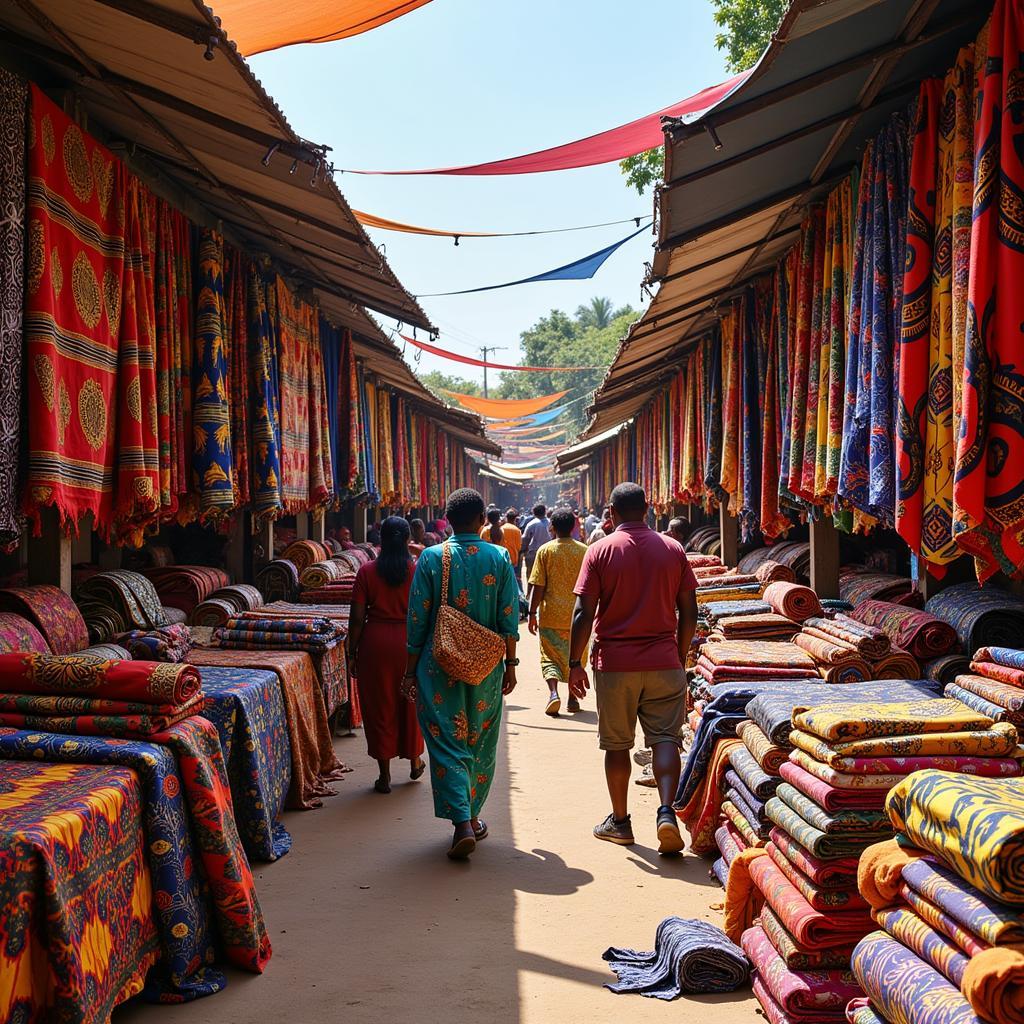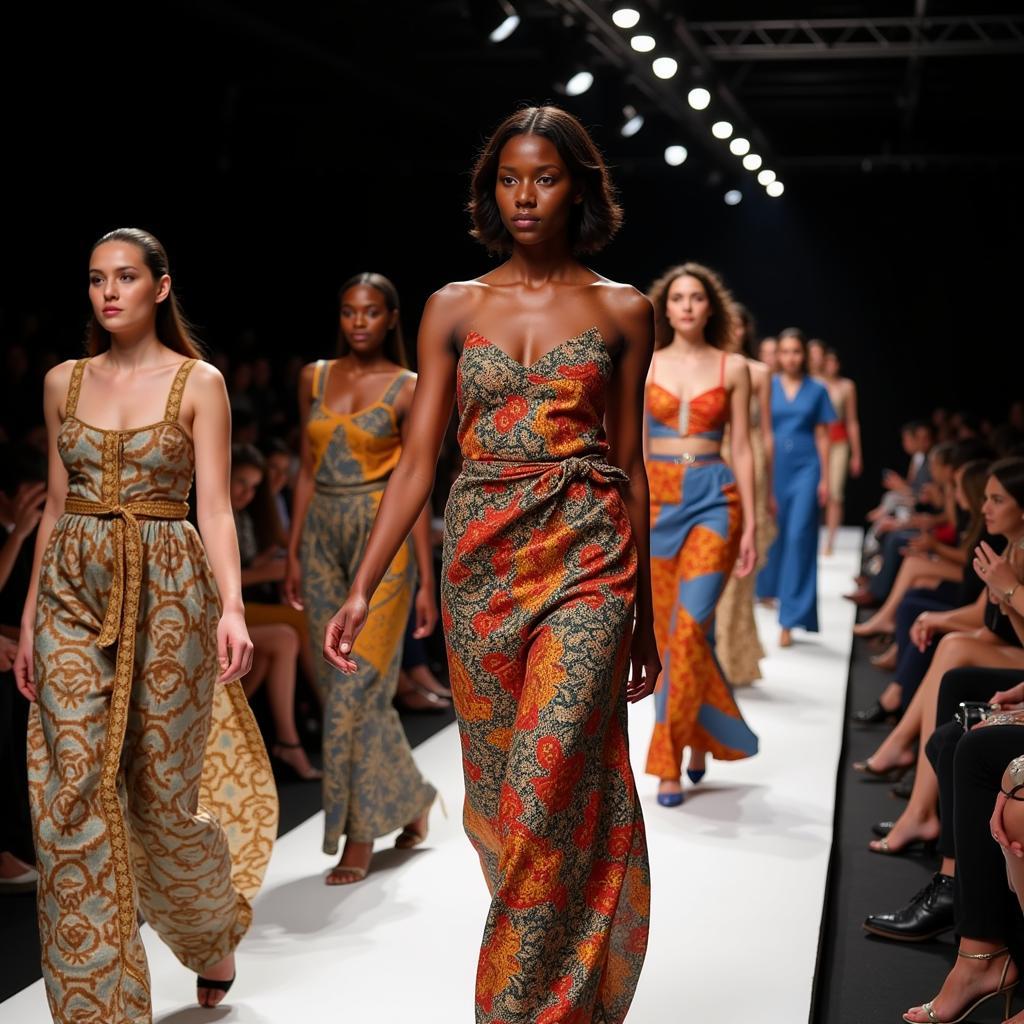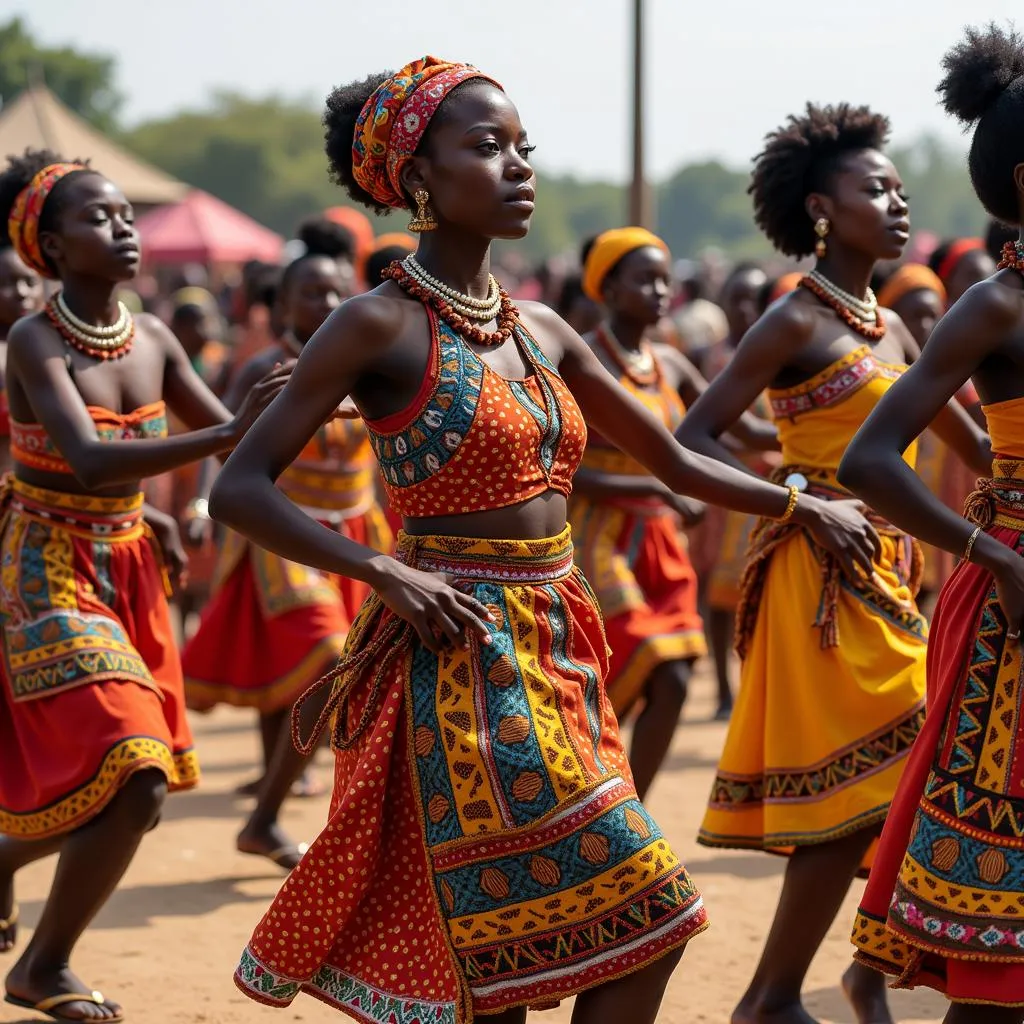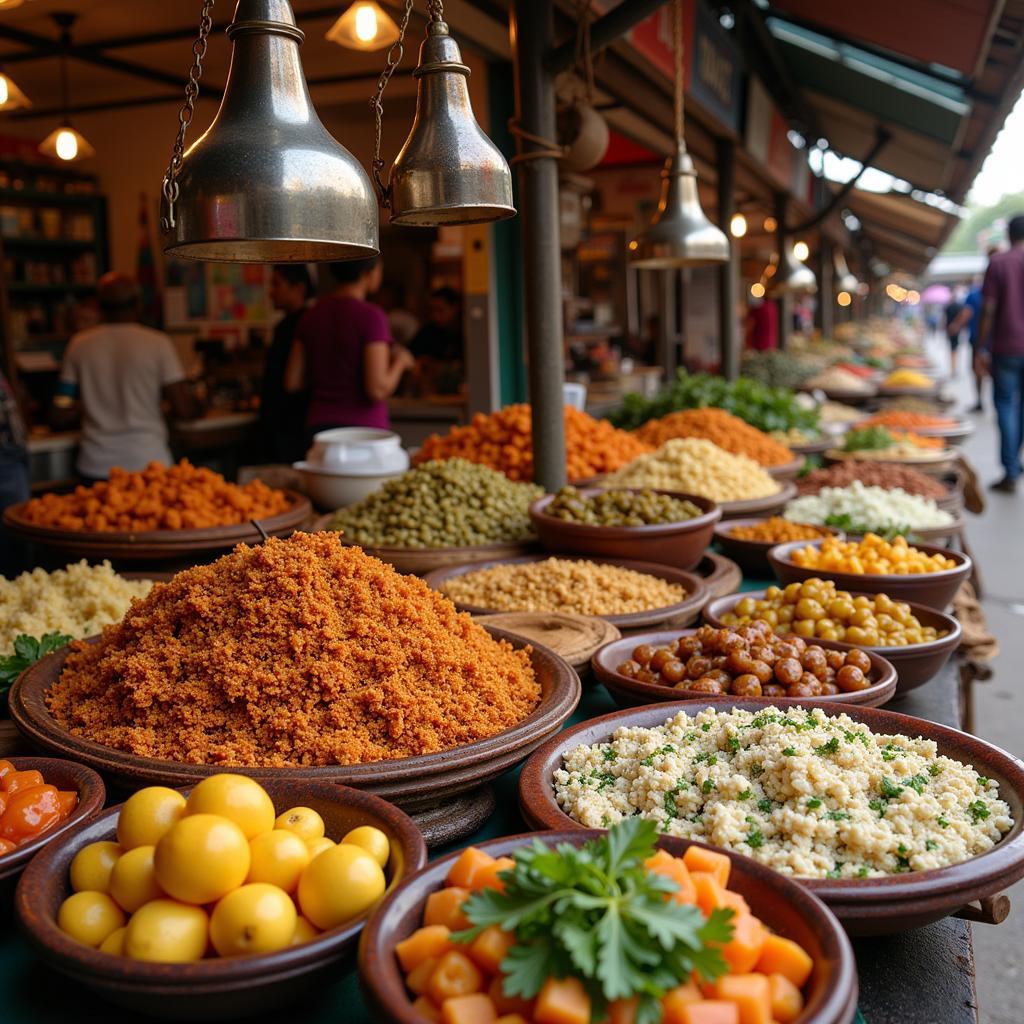Exploring the Vibrant African Fabric Market
The African Fabric Market is a kaleidoscope of colors, textures, and patterns, representing a rich tapestry of cultural heritage and artistic expression. From the bustling marketplaces of Accra to the online shops reaching global audiences, African fabrics tell stories, embody traditions, and inspire contemporary fashion. This article delves into the vibrant world of African fabric, exploring its history, significance, and the diverse markets where it thrives.
 Vendors selling colorful African fabrics in a bustling market
Vendors selling colorful African fabrics in a bustling market
A Journey Through African Textile History
African textiles boast a history as rich and diverse as the continent itself. For centuries, communities have woven, dyed, and embellished fabrics, using techniques passed down through generations. From the intricate kente cloth of Ghana, symbolizing royalty and status, to the bold mud cloth of Mali, reflecting ancient traditions, each fabric carries a unique narrative. The trade routes that crisscrossed the continent played a crucial role in disseminating these textile traditions, leading to the fusion of styles and techniques. This historical exchange has shaped the African fabric market we see today, with its vibrant mix of traditional and contemporary designs.
african baby clothes south africa
Navigating the African Fabric Market: A Guide for Enthusiasts
The African fabric market offers a treasure trove of options for both locals and global consumers. Whether you’re seeking vibrant Ankara prints for a special occasion, or the earthy tones of bogolanfini for a unique home decor project, there’s a fabric to suit every taste. But with so much variety, where do you start? Exploring local markets in African countries offers an immersive experience, allowing you to connect directly with artisans and learn about their craft.
Where to Find Authentic African Fabrics
- Local Markets: These bustling hubs offer a sensory overload of colors and textures. Be prepared to haggle for the best prices and immerse yourself in the local culture.
- Specialty Shops: For a more curated selection, specialty shops often focus on specific types of fabrics or regions, offering expert advice and high-quality pieces.
- Online Retailers: The digital age has opened up a world of possibilities, allowing you to access African fabrics from anywhere in the globe.
Understanding the Different Types of African Fabrics
The African fabric market is a testament to the continent’s creativity and ingenuity. From handwoven textiles to vibrant prints, the variety is astounding. Here are a few examples:
- Ankara: This vibrant, wax-printed cotton fabric is a staple in West African fashion. Its bold patterns and versatility make it a popular choice for clothing, accessories, and home decor.
- Kente: Originating in Ghana, kente is a handwoven cloth with intricate geometric patterns, traditionally worn by royalty and during special occasions.
- Bogolanfini: Also known as mud cloth, this Malian fabric is created using fermented mud and plant dyes, resulting in rich earthy tones and unique designs.
“The beauty of African fabrics lies in their ability to tell stories and connect us to our heritage,” says Abena Serwaa, a renowned Ghanaian textile artist. “Each thread, each color, carries a meaning, a history, and a future.”
The Impact of the African Fabric Market on Global Fashion
African fabrics are increasingly influencing global fashion trends, with designers incorporating their vibrant patterns and textures into their collections. This growing recognition not only elevates African artistry on the world stage but also creates economic opportunities for artisans and communities.
 Models showcasing clothing made from African fabrics at a fashion show
Models showcasing clothing made from African fabrics at a fashion show
african communities council of sa
“The African fabric market is a dynamic force, constantly evolving and adapting,” notes Adebayo Olaoluwa, a Nigerian fashion designer. “It’s a source of inspiration for designers worldwide and a testament to the enduring power of African creativity.”
Conclusion
The African fabric market offers a vibrant tapestry of cultural heritage and artistic expression. From the bustling markets to online platforms, exploring this world is a journey of discovery. By supporting and celebrating African textiles, we contribute to the preservation of tradition and empower the creative talents across the continent. The African fabric market isn’t just about cloth; it’s about connecting with history, embracing artistry, and celebrating the vibrant spirit of Africa.
FAQ
- Where can I buy authentic African fabrics online? Several online retailers specialize in African fabrics, offering a wide selection from different regions.
- What is the significance of kente cloth? Kente cloth is a symbol of royalty and status in Ghana, traditionally worn during special occasions.
- How is bogolanfini made? Bogolanfini, or mud cloth, is created using fermented mud and plant dyes, resulting in its characteristic earthy tones.
- What is the impact of the African fabric market on global fashion? African fabrics are increasingly influencing global fashion trends, providing inspiration for designers and creating economic opportunities for artisans.
- How can I learn more about the history of African textiles? Numerous books, museums, and cultural centers offer insights into the rich history of African textiles.
Common Scenarios and Questions
- Scenario: A customer wants to find fabric for a traditional wedding outfit. Question: What types of African fabrics are suitable for formal wear?
- Scenario: A designer is looking for inspiration for a new collection. Question: Where can I find unique and contemporary African fabrics?
- Scenario: A tourist wants to buy authentic African fabric as a souvenir. Question: What are some reputable markets or shops to buy African fabrics?
Further Exploration
For more information on African art and culture, check out these resources: african doll clothes.
When you need assistance, contact us 24/7:
Phone: +255768904061
Email: [email protected]
Address: Mbarali DC Mawindi, Kangaga, Tanzania.


